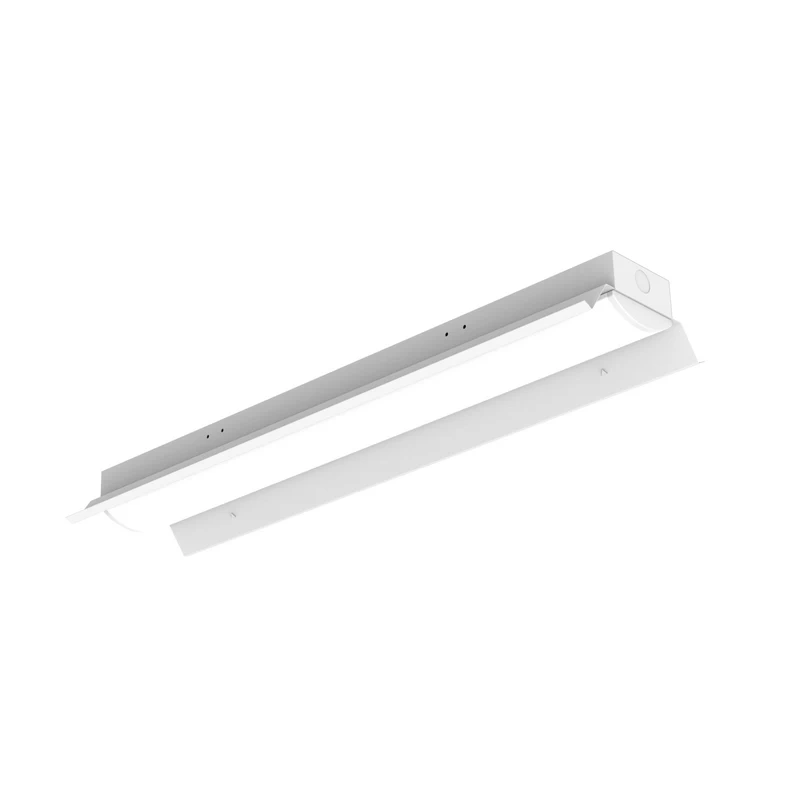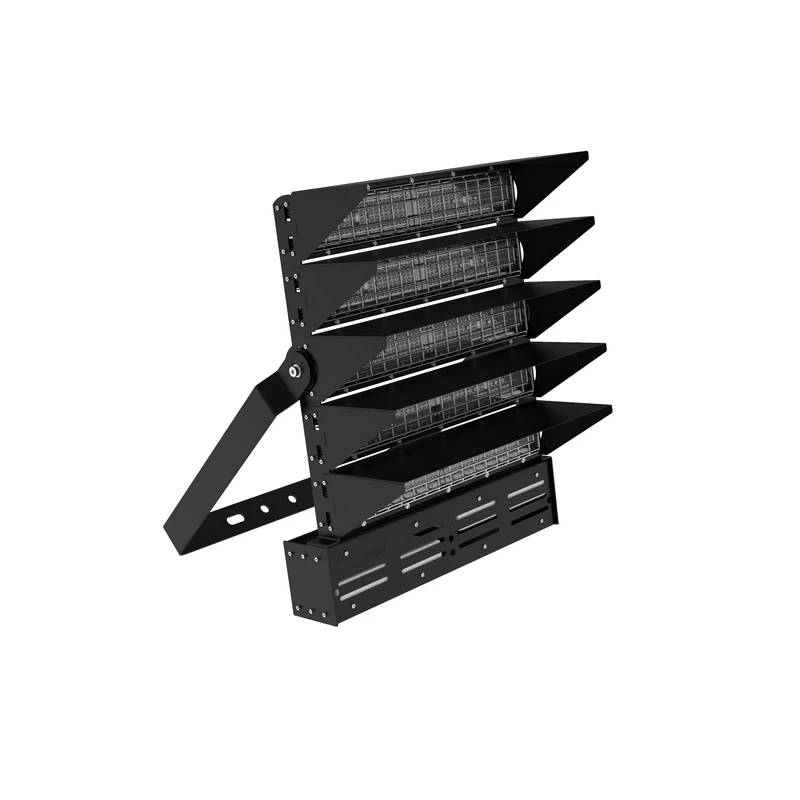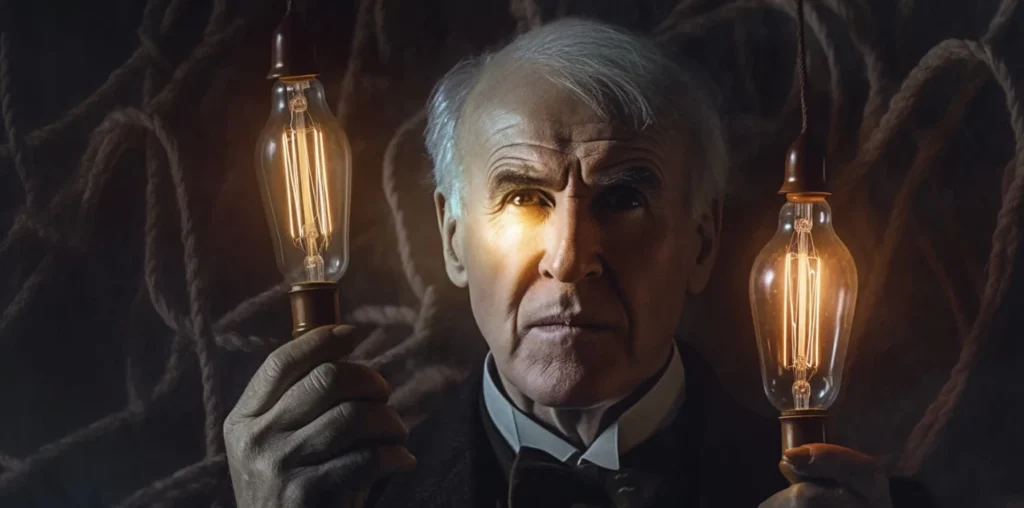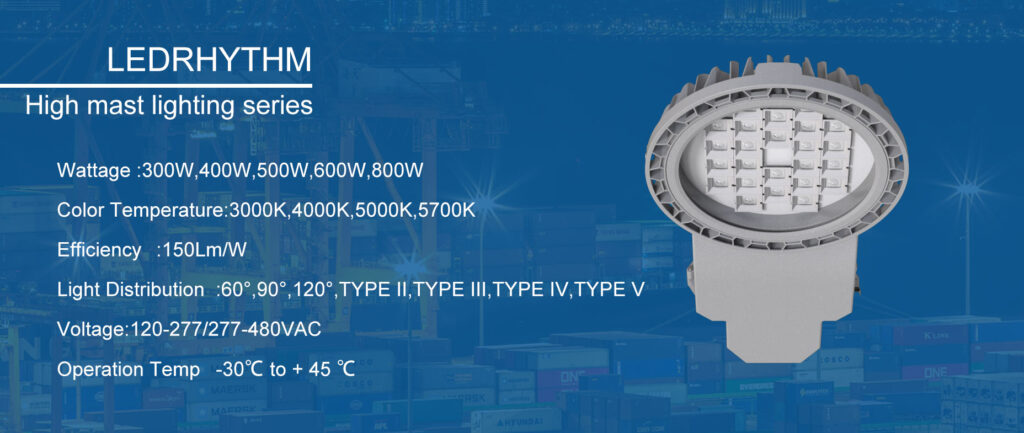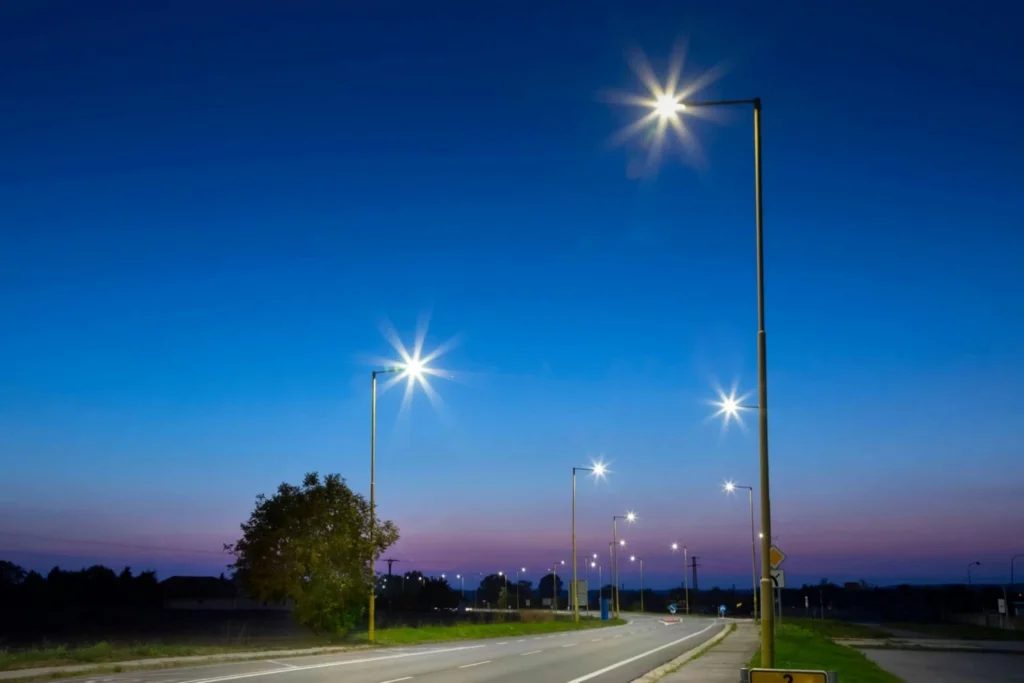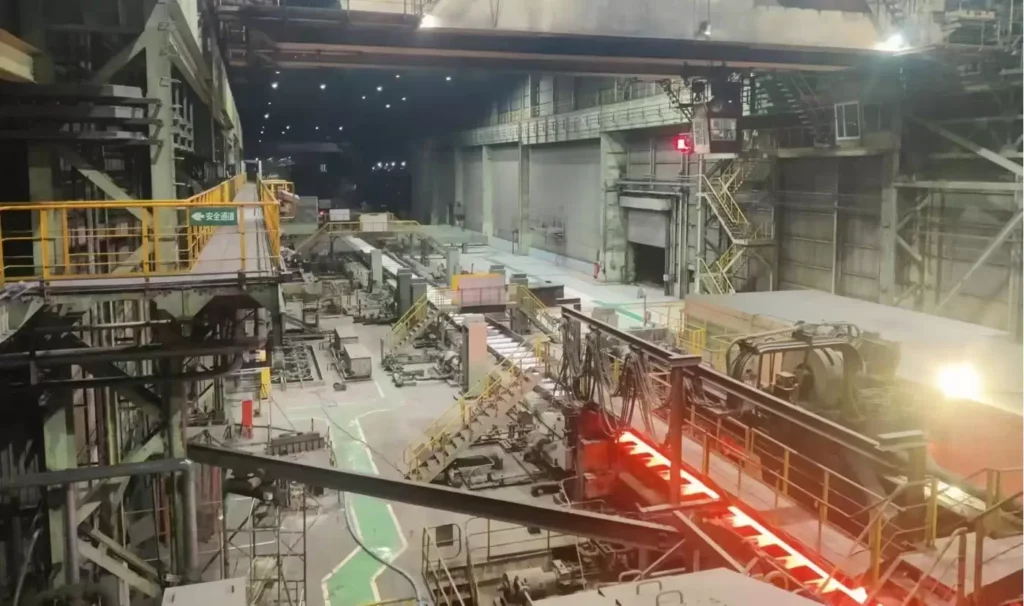Table of Contents
Toggle1. Why do football stadium need to choose suitable lights?
Football field lighting plays a vital role in the game, not only affecting the game effect, but also determining the safety of players and the audience experience.
Do you have many problems?
- The illumination of the field is not enough, and the players’ vision is affected?
- Old metal halide lamps consume high power and require frequent maintenance?
- Want to upgrade to LED lights but don’t know where to start?
Don’t worry, this chapter will take you to learn in detail how to choose the most suitable football stadium lighting.
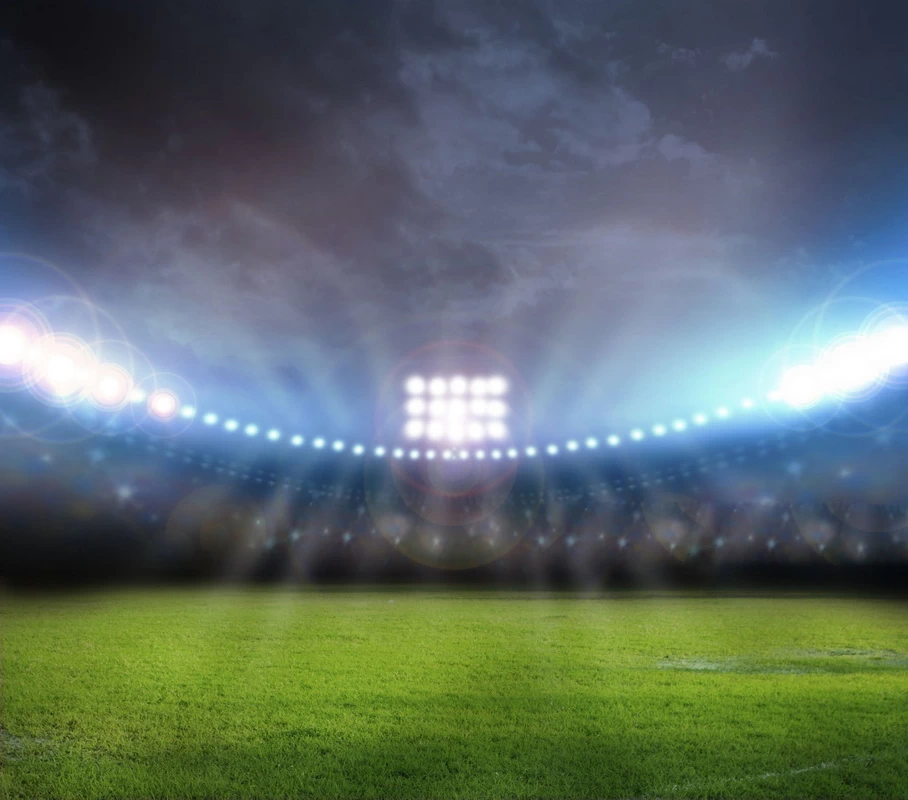
2. 5 Core Advantages of LED Football Stadium Lights
For modern football stadium lighting, LED lights have surpassed traditional metal halide lights in core aspects such as energy efficiency, life, maintenance cost, protection, and precise light distribution.
Although the initial investment may be slightly higher, the huge cost savings (electricity and maintenance costs) brought by it throughout the life cycle, as well as the support for events and broadcasts, make LED the absolute first choice for new and renovated football field lighting systems.
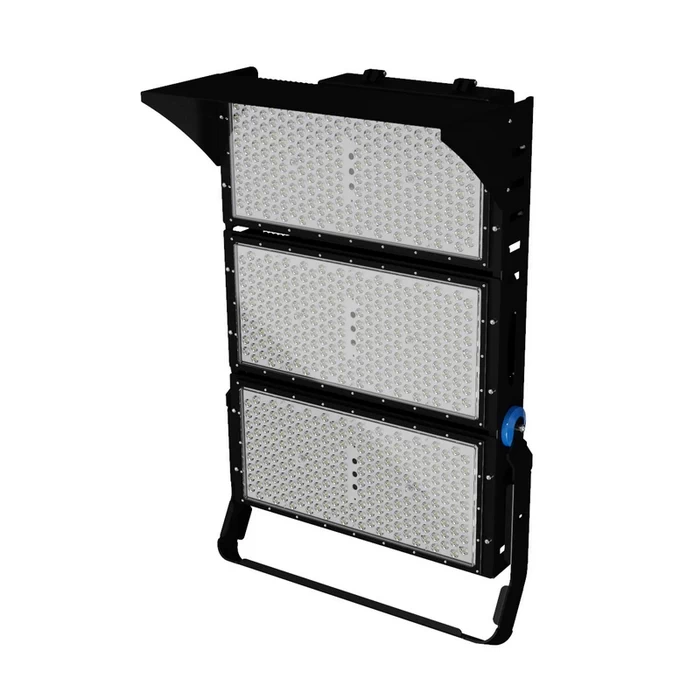
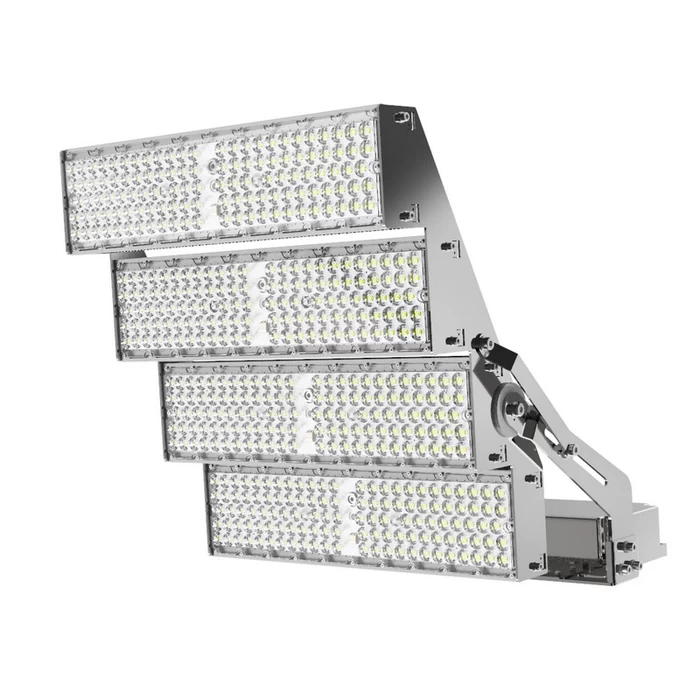
2.1 High brightness, low energy consumption
LED is a semiconductor device that directly converts electrical energy into light energy, with extremely high photoelectric conversion efficiency (140 – 180 lm/W). It can save more than 50% energy, and the brightness can even reach more than 150,000 lumens.
For large football stadiums that require long-term, high-brightness lighting, this means huge electricity savings and significant carbon emissions reduction.
2.2 Long life, low maintenance cost
The life of LED lights for professional football stadiums is usually 50,000 – 100,000 hours (L70/B50 standard, that is, the time when 50% of lights maintain a luminous flux of more than 70%).
The life is several times that of traditional lights, reducing the number of light source replacements and maintenance. For lights installed on poles more than 20 meters high, the maintenance risk and cost are very high. Therefore, the long life of LEDs greatly reduces maintenance costs.
2.3 Instant start, dimming control
LEDs can reach full light output instantly, without preheating, and can restart instantly after a power outage.
LED dimming performance is extremely excellent, and can be dimmed smoothly, linearly, and steplessly, and the dimming process does not affect the life of the light and the quality of light.
2.4 High color rendering, stable lighting
Modern football stadium LED lights can provide a high color rendering index (usually >80, broadcast-level requirements >90), which can more realistically restore the colors of the grass, team uniforms, etc., and improve the quality of TV broadcasts and on-site experience.
2.5 Precise optical control, low glare
LED lights can freely and accurately control the direction of the beam and the shape of the light spot, and can highly concentrate the light in the competition venue.Traditional lights have relatively rough optical control, and difficult to achieve accurate light distribution, resulting in more scattered light and glare.
Effectively reduce the light spill (light pollution) directed to the audience seats, the sky and outside the venue, achieve higher lighting uniformity, and minimize glare for players and spectators. Improve visual comfort and safety.
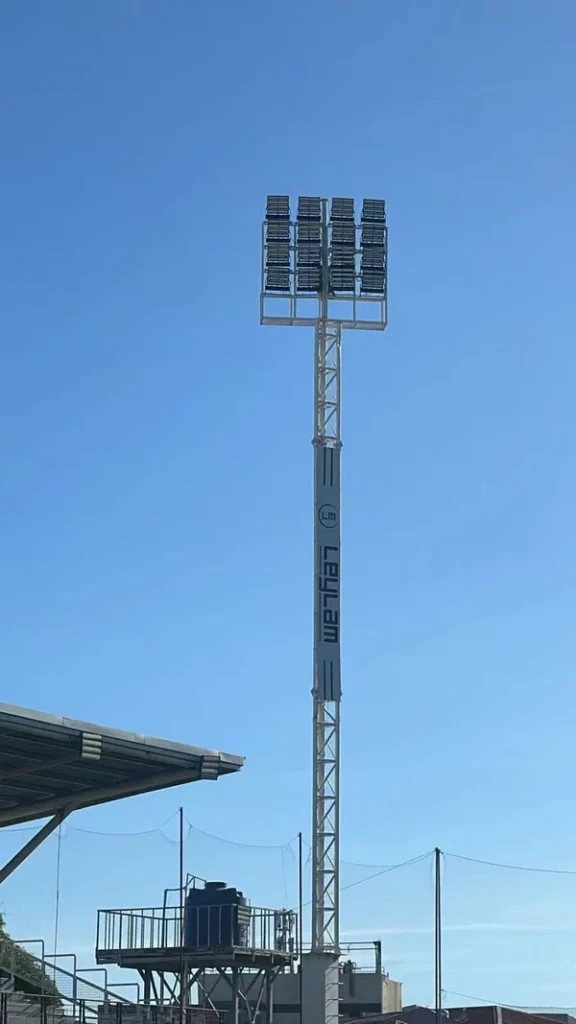
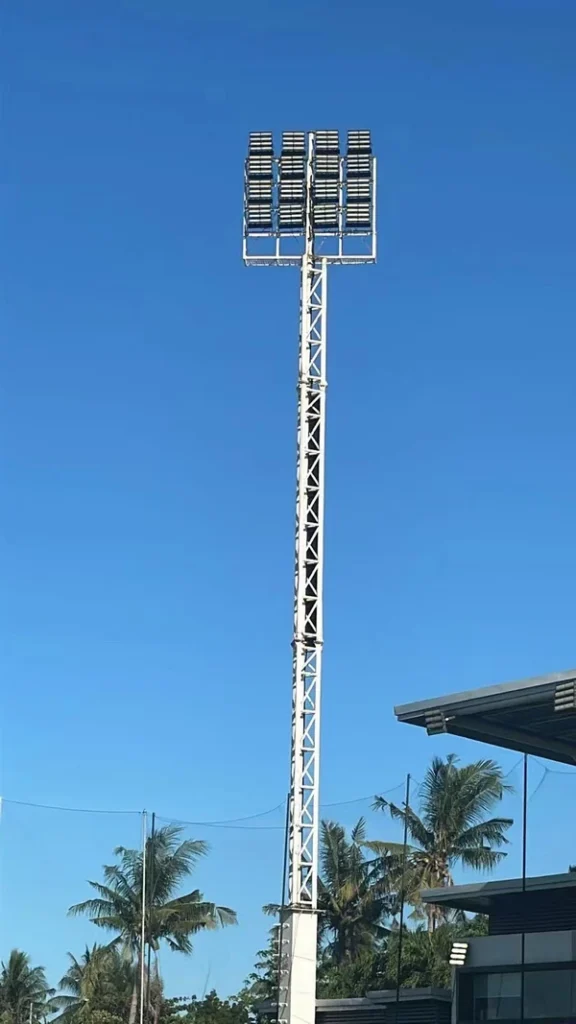
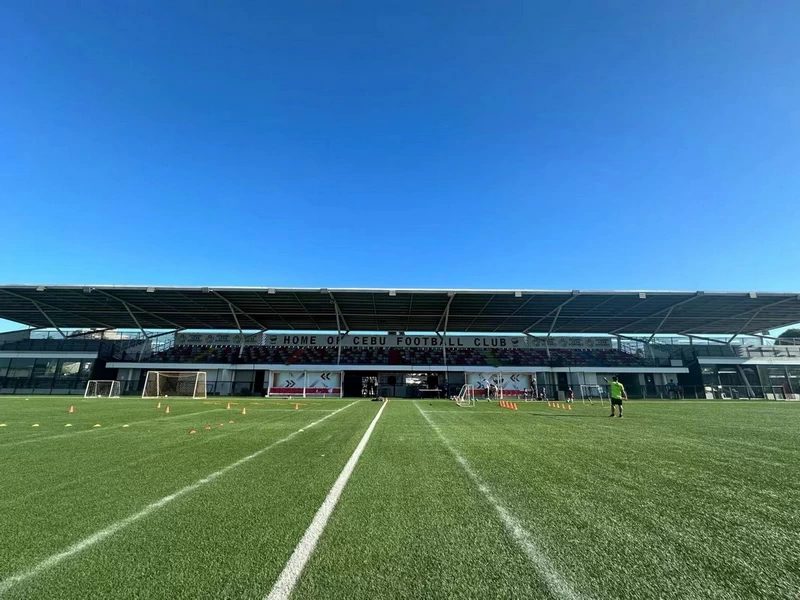
3. Lighting Requirements For Different Football Stadium
The lighting requirements for football fields of different levels vary greatly, and a comprehensive design is required based on factors such as usage scenarios (training/matching/broadcasting), event levels, and safety requirements. The following is a core comparison of lighting requirements for each level (including international general illumination recommendations):
- Purpose: people leisure, children’s training, informal friendly matches
- Core requirements: Basic safety lighting, low-cost operation and maintenance
- Illumination standards: training/entertainment (50-100 lux); amateur competition (100-200 lux).
- Key requirements: uniformity (minimum/average illumination) ≥ 0.4; no strong glare (to avoid affecting the players’ sight); lamp protection level ≥ IP65 (dustproof and waterproof).
- Light selection: Basic LED floodlight (low cost, easy to maintain).

- Purpose: Team training, regional amateur league.
- Core requirements: Improve training quality and meet low-level competitions.
- Illumination standards: Training (200 – 300 lux); Competition (300 – 500 lux).
- Key requirements: Uniformity ≥ 0.6; Color rendering index (Ra) ≥ 65 (basic color reproduction); Control of spill light (reduce interference to the surroundings).
- Light selection: Mid-range LED sports lighting (medium light distribution accuracy).
- Purpose: National league, Professional league.
- Core requirements: Meet international competition standards and meet high-definition live broadcast requirements.
- Illumination standard: 500 – 1400 lux+, depending on actual conditions.
- Key requirements: zero flicker; uniformity ≥ 0.8; glare index (GR) ≤ 50; color rendering index (Ra) ≥ 80.
- Light selection: Professional-grade LED sports lighting (modular design, precise light distribution, intelligent control).
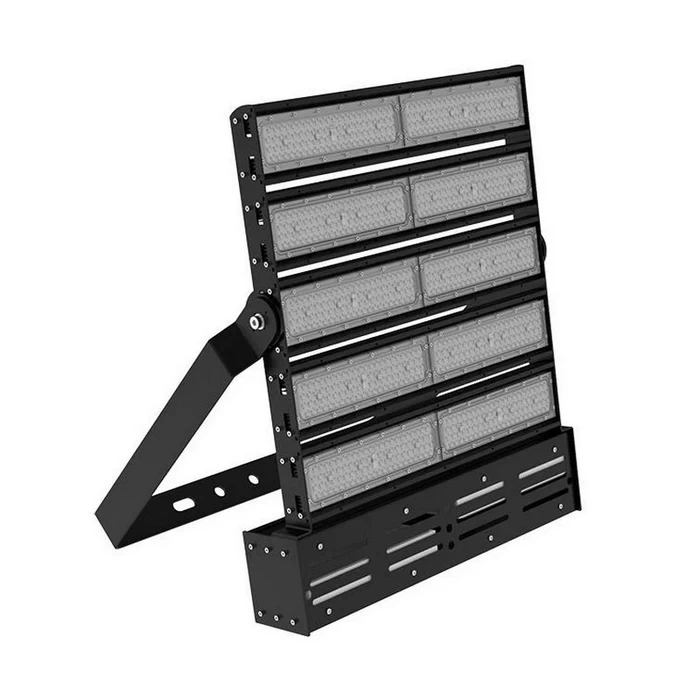
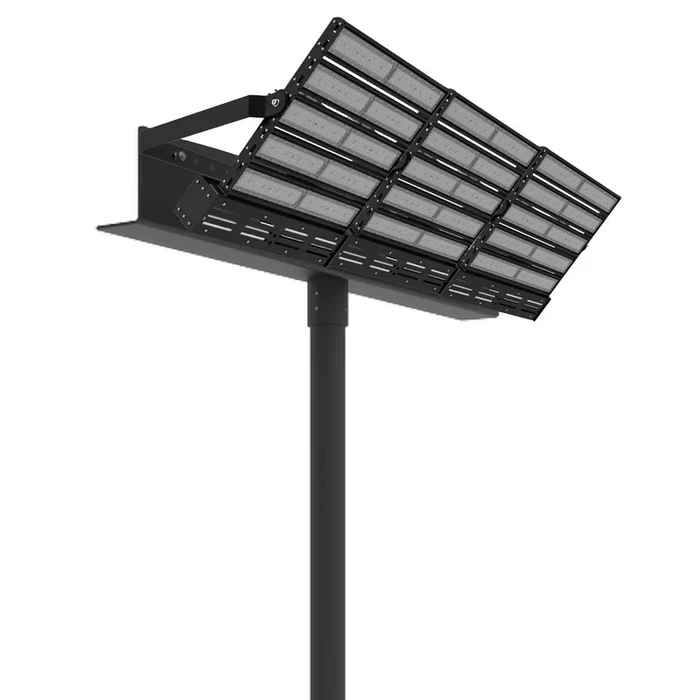
4. Five Key Parameters For Choosing LED Football Field Lights
4.1 Luminous Flux & Power
1000W vs 500W? It depends on the site area and lighting arrangement. Reject “false power” and check the actual luminous flux instead of just looking at the power figure.
Give priority to high-efficiency lights: For example, if the luminous efficiency of a 1500W lamp reaches 140lm/W, the actual brightness is better than that of an 1800W light with a luminous efficiency of 100lm/W.
💡 Don’t know how to calculate total wattage? We provide free lighting simulations, contact us to submit site dimensions.
| Stadium level | Recommended power range | Power selection logic |
|---|---|---|
| Community stadium | 200W-400W | low pole (6-8 meters), meet 100-200 lux |
| Amateur league field | 400W-800W | medium pole (10-15 meters), reach 300-500 lux |
| Professional stadium | 800W-1500W | high pole (20-30 meters), 500-750 lux |
| Broadcasting venue | 1500W-2000W+ | super high pole + multi-light linkage, >2000 lux |
4.2 Color Temperature (CCT)
4000K-5700K (neutral white to daylight white) is selected according to the actual environment. 5000K is the mainstream, simulating natural daylight color.
Reject >6000K cold white light: it causes the lawn color to be distorted (gray), accelerating visual fatigue.
4.3 Color Rendering Index (CRI)
Ra > 80, to ensure true color reproduction. If live broadcast is required, the color rendering index (Ra) must be ≥ 90. You can also ask the supplier to provide a spectrum test report.
4.4 Protection Grade (IP/IK)
IP65/IP66: Resistant to heavy rain and sand and dust invasion (essential for outdoor stadiums); IK08/IK10: Resistant to football impact or hail impact (IK10=20 joules impact resistance).
The heat sink and the lamp body are integrated with die-cast aluminum (excellent heat dissipation + protection); the joint between the lens and the shell adopts a silicone seal + buckle locking structure; the power box has an independent cavity design (isolated from the light source to reduce the risk of overheating).
4.5 Beam Angle & Optical Lenses
A variety of lighting distribution options are available to ensure uniform lighting without dead spots. You can ask the supplier to provide IES files (light distribution curves) and use Dialux optical simulation software to verify the uniformity of the site.
| Lens Type | Beam Angle | Application Area | Target Effect |
|---|---|---|---|
| Narrow Beam Lens | 15°–25° | Central field area | High penetration, long-distance lighting |
| Medium Beam Lens | 30°–50° | Midfield transition area | Uniform light distribution |
| Wide Beam Lens | 60°–90° | Sidelines & corner areas | Eliminate dark zones, full area coverage |
| Asymmetric Lens | Custom | Stands / vertical signage | Precision projection, zero glare |
💡 All the lights shown on this page are produced by our factory. You can consult us for any product.
5. Call to Action
Whether you are upgrading a community venue, building a professional football stadium, or optimizing lighting for event broadcasts, the right LED football stadium lights can greatly improve lighting effects and energy efficiency.Can view some of our floodlights for football stadium.
Ledrhythm is a professional LED lights manufacturer with rich experience. You only need to provide your site size and requirements, and our professionals will design a lighting diagram for you free of charge.
6. FAQ
How many LED lights do I need for a standard football stadium?
The number depends on the required illumination and beam angle. If it is based on the FIFA standard field (105m×68m), for normal training and competition, generally 20 to 40 high-power LED lights are required. If it is an international league, hundreds of higher-power lights are required.
Is it necessary to change wiring when replacing old lights in football stadium?
Not necessarily. Our lights support one-to-one replacement and are highly adaptable, saving construction costs.
How much can football stadium save after replacing LED lights?
Taking the standard FIFA field (105m×68m) as an example, 48 traditional lights (2000W, 80lm/W) are replaced with 48 LED lights (800W, 140lm/W).
Working 5 hours a day and 300 days a year, LED lights save nearly 100,000 kWh of electricity.
Adding low maintenance times and costs, and the long life of LEDs, the cost savings will be even greater. The return on replacing LED lights on a football stadium far exceeds the investment.
How soon can I get a quote and lighting solution?
Usually within 24 hours after receiving your venue size and lighting requirements. Even on weekends, we will process it for you as soon as possible.


